Hard-fought lessons learned around the world confirmed the way the Royal Netherlands Army (RNLA) plan to fight in cities. The RNLA revamped four years ago unit training (for both Air Assault and Mechanized forces) to address the challenges posed by fighting in an urban setting – and preferably without leaving a trail of destruction. However, urban operations involve high risk of casualties, as well as extensive collateral damage. In many scenarios such unintended consequences may complicate or defeat the goals of Dutch involvement.
Combat in cities has never been considered a wise idea. This view was endorsed by the fate of the Russian 131 ‘Maykop’ Brigade, who in 1994 on New Year’s Eve ventured into the Chechen capital of Grozny. This assault became an instructive example of what can occur if a modern army engages in the urban morass without using proper combined-arms tactics. Unsupported Russian armour became easy prey for Chechen hunter-killer teams, who wreaked havoc upon the Russians. Snipers and machine gunners pinned down the advancing columns while rocket propelled grenade (RPG) launchers were fired point blank at tanks and personnel carriers. In a matter of days the Brigade had suffered extraordinary casualties of 800 dead and wounded. They also lost twenty out of twenty-six tanks, 102 out of 120 BMP infantry fighting vehicles (IFV) and all six ZSU-23 self-propelled quadruple 23mm cannons. The Grozny debacle can be ascribed to incompetence, but single armour ran into trouble in urban environments on other occasions as well. Such events tended to confirm the prevailing view that urban operations were not for armour but were strictly the domain of dismounted troops.
However, historical analysis also shows that using tanks significantly reduced infantry casualties in urban operations conducted in Western Europe in the latter part of World War II. Tanks also played an important role in the U.S. armed forces recapturing Seoul from the North Koreans in 1950, and in clearing the North Vietnamese out of Hue in 1968. “To fight and win in cities the attacking side must have the means to reach into them to strike selectively, secure key points or recover elements quickly,” explains Lieutenant-Colonel Johan van Houten, commanding officer Urban Operations Training Wing (IGOVG) of the RNLA. “Main Battle Tanks (MBT’s) can do this, with its combination of survivability, speed, fire-power, lethality, sustainability and shock effect.”
Thunder-runs, that set the stage for Operation Iraqi Freedom, saw 70 ton M1 Abrams tanks and other armoured behemoths racing at breakneck speeds into the heart of Iraq, routing city after city. Stability and support operations have turned out more lethal than expected. The RNLA requirement for armoured platforms, ranging from Leopard 2 A6 tanks to the new CV9035NL IFV, the future large armoured 8×8 wheeled vehicles and ‘Fennek’ light armoured 4×4 wheeled Reconnaissance and Utility Vehicles, is as important as it has ever been and, perhaps, more so.
During operations in Iraq, it became clear that patterns of employment of combined-arms both solidified and challenged existing doctrine. One thing is for sure: to gain proximity to the enemy and survive his ambush attacks, having sufficient armour surrounding the forces (physically) has proven vital. When on the move throughout a city, modern armour is able to support the infantry with the enhanced vision capability of their dual sights provided by the gunner’s primary sight and the commander’s independent thermal viewer. Armoured vehicles can also move mounted infantrymen rapidly to points where, together, they can dominate and isolate an area. Dismounted infantry could disperse to the flanks of the tank to eliminate any threat that lurks in the shadows of alleys – attempting to get into blind spots of the tank. Therefore, success in the urban environment requires the effective use of combined-arms, the mix of infantry, engineers, artillery, armoured platforms and aviation components.
“What you do not want to do is use any of these capabilities by themselves,” tells Van Houten. “Going alone into an urban battle will place them at a severe disadvantage and is tantamount to suicide. Only together can these forces accomplish their mission with minimal casualties.” At the same time it must be noted that the RNLA recognises that a series of enhancements are needed, to further allow (Heavy) armour to operate and survive in future urban environments. Adapting its equipment to urban operations is likely to have an impact on all aspects, from firepower to protection. As far as firepower is concerned, the emphasis is likely to be on the use of a new generation of 120mm tank gun ammunition that is proving very useful in Iraq. One new round is the M908, which is actually a reconfigured M830A1 Multi-Purpose Anti Tank round. The M908 is specifically developed to reduce obstacles and rubble concrete structures and fortifications. Its concrete-penetrating capabilities is improved by replacing the original two-position fuse with a hardened steel cap. This cap allows the modified warhead to ‘imbed’ itself in the concrete before detonating, causing additional fracturing of the concrete.
The genesis of the XM1028 Canister Tank Cartridge also comes from developments in urban tank-warfare. This round fulfils the requirement for a dedicated antipersonnel round used against close-in massed infantry. Lacking an explosive component, the XM1028, in effect, transforms the tank into a giant shotgun. The cartridge contains 1100 tungsten balls that immediately begin dispersing once they exit the cannon muzzle. Given this lethality, it can be used against anti-armour ambushes (RPG teams) where immediate return fire is critical or in situations where a conventional Multi-Purpose (MP) breaching round would result in over-penetration, or unacceptable levels of collateral damage.
The answer from Rheinmetall W&M is the 120mm ‘PELE’ round, an acronym standing for ‘Penetrator with Enhanced Lateral Effect’. Their intention is also to modify existing MP rounds so that they can be used to support infantry during house-to-house fighting, but without causing severe damage to building exteriors or – as could happen with kinetic energy projectiles – buildings located behind a target. If, for instance, the common MP ammunition was fired against a building, much of its effect would be outside the building with serious risks to the dismounted troops. The M908, the PELE and XM1028 all represent a new breed of specialised projectiles, putting a new spin on the good-old standbys.
The enemy engaged in the back-streets and alleys use proven kinetic techniques. The RPG, command-detonated improvised explosive devices (IED) and AK-47’s are employed in an asymmetric fashion. The predominant threat in an urban setting will come from all directions, instead of an attack within the frontal arc. Armour of existing tanks has proved highly effective against contemporary short-range antitank weapons. However, the RPG’s used so far have been of the original type and have only half the armour penetration capability of the RPG-7VR (with tandem-warhead) version or the improved RPG-22. Both types are designed to defeat the new generation of reactive armour and inevitably appear on the streets soon.
To be protected against RPG and IED, combat vehicles would have to be fitted with more armour, but adding standard armour would significantly increase their weight. One alternative is Explosive Reactive Armour (ERA), which can be three to nine times as effective in relation to its weight, as steel armour against shaped charge weapons. But ERA constitutes a danger to dismounted troops close to the tank. A potential and much safer alternative to ERA is electromagnetic (EM) armour. Furthermore, much hope is also pinned on the development of Active Protection Systems (APS), with or without incorporating laser-based directed energy weapons as countermeasures. But even if APS are used, still sufficient conventional armour will be needed to absorb the impact of disabled or shattered projectiles.
The US military is currently exploring a package of upgrades to its M1-series Abrams tanks, called TUSK (Tank Urban Survivability Kit), based on user comments in Iraq.
As currently envisioned, the upgrade includes a remote weapon station. This system allows the commander to fire his .50 calibre machine gun 360-degrees remotely during day and night operations, while remaining in the closed-hatch position. Likewise, a bolt-on gun-shield protects the loader during open-hatch machine gun operations. Additionally a thermal weapons sight provides him with a thermal imagining capability.
The track and suspension system was the target of insurgents RPG’s. Improved ‘Abrams reactive armour tiles’ in the skirt areas now offer much better ballistic protection to the hull and side armour panels. A rear protection crate of ‘slat armour’ is designed to protect the hull/rear engine area against RPG and pre-detonate shaped charges threats.
Closed-hatch operations severely impairs visual signals from infantry to the tank crew. Means of voice communication and situational awareness is critical to keep vehicles and dismounted movement synchronized. An external telephone on the rear of the Abrams will allow soldiers working alongside the tank to talk to the crew.
In addition to these kind of possible upgrades the expected digital Battlefield Management System (BMS) and the mine plough for the RNLA Leopard 2 A6 will make the tank more suitable for urban operations. The latter can effectively clear low-loose rubble or dirt barricades that have been sown with mines, while the BMS makes the tank a component of a network centric force with comprehensive battle awareness, especially in closed-hatch operations.
The Education and Training Command Manoeuvre (OTCMan) of the RNLA is leading in the way the service trains its armour and infantry (both Air Assault and Mechanized) forces, from private to brigade commander. “Basic-level trainers are in use in all Army barracks for practicing basic entry drills,” Van Houten explains. “A group-level trainer with 40 houses is constructed at the Harskamp Infantry Training Centre. At the Marnewaard training area there is a 120-building village (Marnehuizen) in use for company and battalion or combined-arms training, and includes a variety of above and below-ground city, village, industrial, and residential training environments.”
The Swedish ‘Saab Training Systems’ was recently awarded a contract for a fully-instrumented MOUT system for the Marnehuizen facility. All the devices – from door and window mechanisms to tracking and video cameras – are integrated into a single system. The system will allow the RNLA to conduct, control and monitor, realistic exercises with simulated direct and indirect fire effects and area weapons and, additionally, further develop its doctrine. Units can seamlessly move from open terrain into urban areas using the same instrumented training system, whereby dismounted infantry supported by vehicles start clearing the village house-by-house and room-by-room. The exercise control will be able to follow all individual players and all vehicles in every phase of the exercise. The system will be in service no later than January 2006. This contract complements the Mobile Combat Training Centre contract, which has been in service within the RNLA since 2003.
Systems will continue to become more sophisticated, but regardless of their capability, the military must still avoid the temptation to rely on technology to do the entire job of training. “The most important thing is the trainer, not the technology,” believes Van Houten. “At the end of the day 80 % is down to the trainer. We must remember to train the trainers.”
The urban fight brings to light a cautionary message for the RNLA: be wary of eliminating or reducing the option of heavy armour as this may remove a valuable asset that has proven decisive when moving from a manoeuvre fight to an asymmetric street fight. This evolution in warfare is not a side note in history; it is conceivably the foreshadow of operations to come. Moreover, even if we wanted to, armour could not avoid towns and cities because of the growing urbanization of the world and the growing importance of cities. It is estimated that by 2015-2020 almost 66 per cent of the world’s population will be living in urban areas.
The mindset, in which tanks were considered something from a bygone era, has changed considerably. Instead, they ironically may become even a key component in urban warfare.




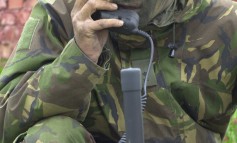
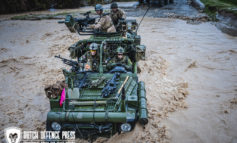
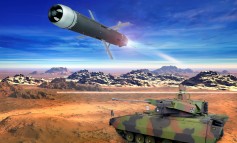
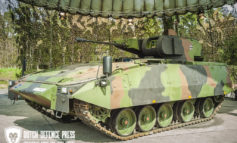
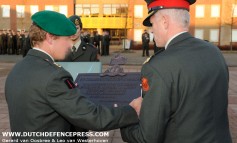
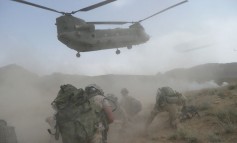



Leave a Reply